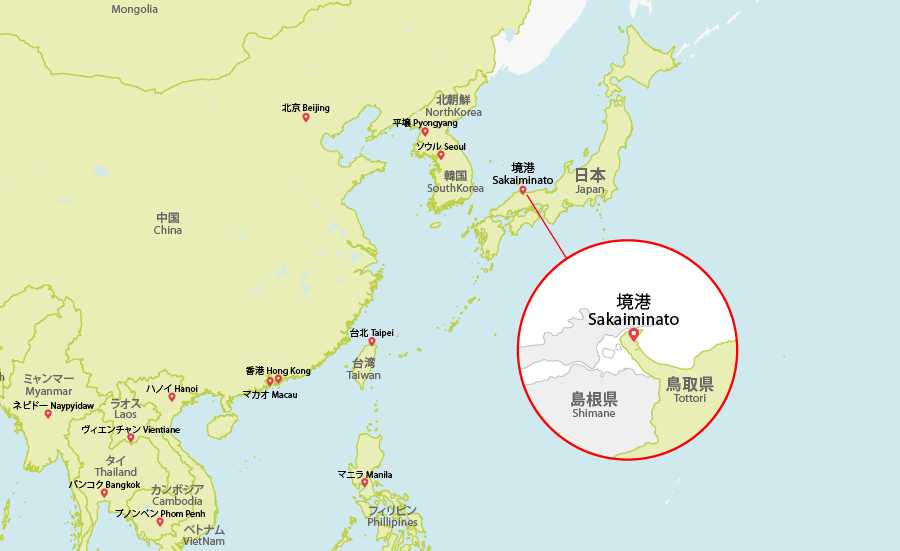
History of Sakai Port
Sakai Port is located in Sakaiminato City, Tottori Prefecture, and shares its border with Shimane Prefecture. It is in the westernmost point of Tottori Prefecture and is surrounded by Yumigahama and Shimane peninsulas which create a waterway, Sakai Channel, setting favorable conditions for a port. This natural port has enjoyed a long history since 1860 when the local feudal domain appointed an administrative office in Sakai Division to carry out trade in Seto Inland Sea, Kyushu, Tajima and Hokuriku regions using wasen (traditional wooden boats). This port was later administered by the prefectural office in 1890 and declared an open port in 1904 to make way for foreign trade. In 1953, it was designated as “Type 3 Fishing Port” and due to the significant increase in purse seine catches, it was labeled “Special Type 3 Fishing Port” in 1973 as it was also well equipped with a wholesale market making it a hub for Sea of Japan’s offshore fishing and the center for seafood production and distribution.


